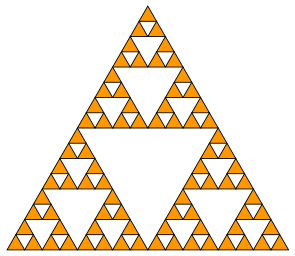<p align="center"><img src="https://raw.githubusercontent.com/chalk-diagrams/chalk/master/examples/output/logo-sm.png" width=300></p>
Chalk is a declarative drawing library built on top of [PyCairo](https://pycairo.readthedocs.io).
The API draws heavy inspiration from
Haskell's [diagrams](https://diagrams.github.io/),
Scala's [doodle](https://github.com/creativescala/doodle/) and
Jeremy Gibbons's lecture notes on [Functional Programming for Domain−Specific Languages](http://www.cs.ox.ac.uk/publications/publication7583-abstract.html).
The documentation is available at [https://chalk-diagrams.github.io](https://chalk-diagrams.github.io).
⚠️ The library is still very much work in progress and subject to change.
## Installation
The library is available on PyPI as `chalk-diagrams` and can be installed with `pip`:
```bash
pip install git+https://github.com/chalk-diagrams/chalk/
```
On Debian (or Colab) you will need to install Cairo
```bash
sudo apt-get install libcairo2-dev
```
If you want to use the LaTeX extension, run:
```bash
pip install chalk-diagrams[latex]
```
For the LaTeX extension you might need to install `pdf2svg` and `texlive`;
on Debian these dependencies can be installed as follows:
```bash
sudo apt-get install pdf2svg texlive texlive-science texlive-latex-recommended texlive-latex-extra
```
**Installation with Conda**
You can install the library with **conda** from `conda-forge` channel.
```powershell
conda install -c conda-forge chalk-diagrams
```
## Overview
Below we provide a brief introduction of the main functionality of the library.
These examples are available in the `examples/intro.py` file.
We start by importing the [`colour`](https://github.com/vaab/colour) module and the `diagrams` functions:
```python
from colour import Color
from chalk import *
```
We also define some colors that will be shortly used:
```python
papaya = Color("#ff9700")
blue = Color("#005FDB")
```
We can easily create basic shapes (the functions `circle`, `square`, `triangle`) and style them with various attributes (the methods`fill_color`, `line_color`, `line_width`).
For example:
```python
d = circle(1).fill_color(papaya)
```

The diagram can be saved to an image using the `render` method:
```python
d.render("examples/output/intro-01.png", height=64)
```
We can glue together two diagrams using the combinators `atop` (or `+`), `beside` (or `|`), `above` (or `/`).
For example:
```python
circle(0.5).fill_color(papaya) | square(1).fill_color(blue)
```
which is equivalent to
```python
circle(0.5).fill_color(papaya).beside(square(1).fill_color(blue))
```
This code produces the following image:

We also provide combinators for a list of diagrams:
`hcat` for horizontal composition, `vcat` for vertical composition.
For example:
```python
hcat(circle(0.1 * i) for i in range(1, 6)).fill_color(blue)
```

We can use Python functions to build more intricate diagrams:
```python
def sierpinski(n: int, size: int) -> Diagram:
if n <= 1:
return triangle(size)
else:
smaller = sierpinski(n - 1, size / 2)
return smaller.above(smaller.beside(smaller).center_xy())
d = sierpinski(5, 4).fill_color(papaya)
```

### Gallery of examples
For more examples, please check the `examples` folder;
their output is illustrated below:
<table>
<tr>
<td align="center"><img src="https://raw.githubusercontent.com/chalk-diagrams/chalk/master/doc/imgs/squares.png"><br><code><a href="https://github.com/chalk-diagrams/chalk/tree/master/examples/squares.py">squares.py</a></code></td>
<td align="center"><img src="https://raw.githubusercontent.com/chalk-diagrams/chalk/master/doc/imgs/logo.png"><br><code><a href="https://github.com/chalk-diagrams/chalk/tree/master/examples/logo.py">logo.py</a></code></td>
<td align="center"><img src="https://raw.githubusercontent.com/chalk-diagrams/chalk/master/doc/imgs/escher-square-limit.png"><br><code><a href="https://github.com/chalk-diagrams/chalk/tree/master/examples/escher_square.py">escher_square.py</a></code></td>
</tr>
<tr>
<td align="center"><img src="https://raw.githubusercontent.com/chalk-diagrams/chalk/master/doc/imgs/hilbert.png"><br><code><a href="https://github.com/chalk-diagrams/chalk/tree/master/examples/hilbert.py">hilbert.py</a></code></td>
<td align="center"><img src="https://raw.githubusercontent.com/chalk-diagrams/chalk/master/doc/imgs/koch.png"><br><code><a href="https://github.com/chalk-diagrams/chalk/tree/master/examples/koch.py">koch.py</a></code></td>
<td align="center"><img src="https://raw.githubusercontent.com/chalk-diagrams/chalk/master/doc/imgs/hex-variation.png"><br><code><a href="https://github.com/chalk-diagrams/chalk/tree/master/examples/hex_variation.py">hex-variation.py</a></code></td>
</tr>
<tr>
<td align="center"><img src="https://raw.githubusercontent.com/chalk-diagrams/chalk/master/doc/imgs/lenet.png"><br><code><a href="https://github.com/chalk-diagrams/chalk/tree/master/examples/lenet.py">lenet.py</a></code></td>
<td align="center"><img src="https://raw.githubusercontent.com/chalk-diagrams/chalk/master/doc/imgs/tensor.png"><br><code><a href="https://github.com/chalk-diagrams/chalk/tree/master/examples/tensor.py">tensor.py</a></code></td>
<td align="center"><img src="https://raw.githubusercontent.com/chalk-diagrams/chalk/master/doc/imgs/hanoi.png"><br><code><a href="https://github.com/chalk-diagrams/chalk/tree/master/examples/hanoi.py">hanoi.py</a></code></td>
</tr>
<tr>
<td align="center"><img src="https://raw.githubusercontent.com/chalk-diagrams/chalk/master/doc/imgs/tree.png"><br><code><a href="https://github.com/chalk-diagrams/chalk/tree/master/examples/tree.py">tree.py</a></code></td>
<td align="center"><img src="https://raw.githubusercontent.com/chalk-diagrams/chalk/master/doc/imgs/lattice.png"><br><code><a href="https://github.com/chalk-diagrams/chalk/tree/master/examples/lattice.py">lattice.py</a></code></td>
</tr>
<!--<tr>
</tr>
-->
</table>
These scripts can be run as follows:
```bash
python examples/squares.py
```
## Authors
- [Dan Oneață](http://doneata.bitbucket.io/)
- [Alexander Rush](http://rush-nlp.com/)
Special thanks to:
- [Sugato Ray](https://github.com/sugatoray/), for his significant contributions and suggestions;
- [Ionuț G. Stan](http://igstan.ro/), for providing many useful insights and comments.




